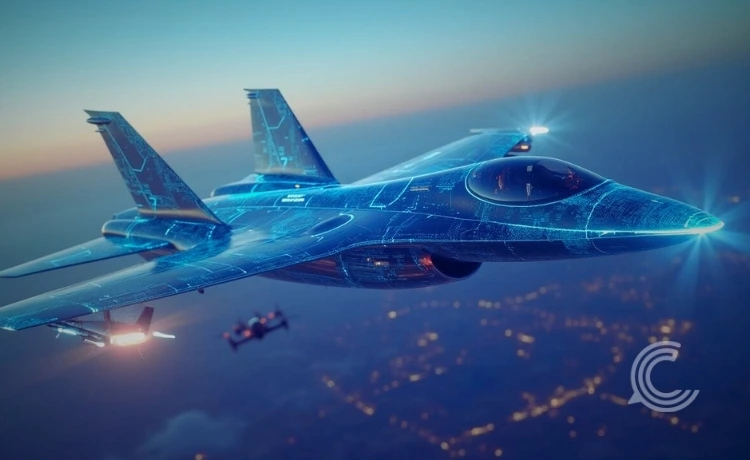Meet World’s First AI Fighter Jet – X-Bat That Needs No Runway or Pilot

Key Points:
- The X-BAT jet utilizes Vertical Takeoff and Landing (VTOL) technology, eliminating the reliance on fixed runways, a major vulnerability in modern conflict
- The aircraft is powered by proprietary Hivemind AI software, allowing it to execute complex combat missions, including strike and reconnaissance, without continuous human input or communication links
- The new generation of highly capable, runway-independent, is designed to multiply air force capabilities and serve as a core element of future ‘Collaborative Combat Aircraft’ (CCA) programs
Defense contractor Shield AI recently unveiled the X-BAT, a stealthy, jet-powered aircraft designed to be the world’s first fully autonomous fighter jet capable of vertical takeoff and landing. The most revolutionary aspect of the design is its complete independence from long, fixed runways, which are often the first targets struck in a conflict.
According to Brandon Tseng, Shield AI’s co-founder and president, a former Navy SEAL, this capability represents the “holy grail of deterrence” because it drastically increases the survivability and operational reach of air forces. By leveraging VTOL technology, the X-BAT can launch and recover from virtually any compact, hardened location, including naval vessels, remote islands, or austere forward bases. This flexibility solves a long-standing challenge in modern air combat: the survivability on the ground.
The company stated the aircraft combines VTOL with a fighter-class engine, allowing it to achieve a range exceeding 2,000 nautical miles while carrying a full mission payload. This extended reach means the jets can be based farther away from the front lines, reducing their dependence on vulnerable tanker aircraft for refueling.
Hivemind AI and Autonomous Combat
At the core of the X-BAT’s transformative capability is Hivemind, Shield AI’s proprietary artificial intelligence flight software. Unlike traditional drones that are remotely piloted and rely on constant communication and GPS signals, the Hivemind system allows the aircraft to operate autonomously in communications-denied environments. The system acts as the digital “brain,” enabling the jet to:
- Independently chart courses and adjust mission parameters in real-time.
- Execute complex combat maneuvers and make decisions on targets without human intervention in the moment.
- Function seamlessly with other manned aircraft as a “drone wingman,” a concept the U.S. Air Force refers to as Collaborative Combat Aircraft (CCA).
This level of autonomy is crucial for missions deep within contested airspace where jamming or cyber-attacks could sever traditional command links. Shield AI executives emphasized that the X-BAT is capable of organically closing its own “kill chains” even if the communication link is severed, raising immediate questions about the level of human oversight in future conflict scenarios. The AI-powered fighter jet represents a significant shift from simple remote control to true machine autonomy in military hardware.
Economics, Ethics, and the Future of War
The X-BAT is also part of a strategic military goal to achieve “affordable mass.” Shield AI says the aircraft is being designed for a much lower lifecycle cost than current fifth-generation fighters like the F-35. The compact footprint is another operational advantage, with up to three X-BATs able to occupy the same deck space needed for a single legacy fighter, according to Shield AI. This “attritable” design philosophy suggests that the aircraft could be deployed aggressively without the prohibitively high financial risk associated with losing a traditional, multi-million dollar fighter jet.
The push toward fielding a fully autonomous, weaponized platform has not been without controversy. While proponents argue that the speed and accuracy of artificial intelligence can minimize human casualties and deter larger conflicts, critics highlight the ethical dilemma of delegating lethal decision-making to a machine.
The X-BAT represents the culmination of years of defense research. Former Air Force Secretary Frank Kendall has already flown aboard an AI-piloted X-62A VISTA, a modified F-16, demonstrating the Pentagon’s confidence in this emerging technology. Shield AI has announced initial VTOL flights are planned for 2026, with the goal of full mission capability by 2028. If successful, this AI-powered fighter jet will be a pivotal asset in the global race for military-technological superiority.



